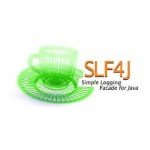Java Yauaa User Agent Parsing Example
1. Overview
User agent parsing is essential for tailoring user experiences based on the type of device, browser, or operating system making a request. The Java Yauaa user agent parsing library, Yet Another UserAgent Analyzer (Yauaa) is a powerful and extensible tool for this purpose. It provides detailed insights from user agent strings with high accuracy.
In this guide, we’ll explore Java Yauaa user agent from setting up the project to optimizing its performance, and show how it can be used for device-based routing in web applications.
2. Setting Up Yauaa for Java User Agent Parsing
To get started with Java Yauaa user agent parsing, you need to include Yauaa in your project. If you’re using Maven, add the following dependency to your pom.xml:
<dependency>
<groupId>nl.basjes.parse.useragent</groupId>
<artifactId>yauaa</artifactId>
<version>6.12</version> <!-- Check for the latest version -->
</dependency>
For Gradle, add this:
implementation 'nl.basjes.parse.useragent:yauaa:6.12'
After including the library, you can begin analyzing user agents with just a few lines of code.
3. Extracting Device and Browser Information with Java User Agent
Yauaa allows you to parse and extract fields such as device type, operating system, browser name, and version. Here’s a basic example:
import nl.basjes.parse.useragent.UserAgent;
import nl.basjes.parse.useragent.UserAgentAnalyzer;
public class UserAgentInfo {
public static void main(String[] args) {
UserAgentAnalyzer uaa = UserAgentAnalyzer.newBuilder().hideMatcherLoadStats().withCache(10000).build();
UserAgent agent = uaa.parse("Mozilla/5.0 (iPhone; CPU iPhone OS 13_3 like Mac OS X)...");
System.out.println("Device: " + agent.getValue("DeviceName"));
System.out.println("Operating System: " + agent.getValue("OperatingSystemNameVersion"));
System.out.println("Browser: " + agent.getValue("AgentNameVersion"));
}
}
This allows you to easily log, audit, or conditionally branch logic based on the user’s environment.
4. Implementing Device-Based Routing Using Java User Agent Parsing
With Java Yauaa user agent parsing, you can implement device-based routing in web applications displaying different pages or templates for mobile, tablet, or desktop users.
Here’s a simple servlet-based approach:
@WebServlet("/home")
public class HomeServlet extends HttpServlet {
private final UserAgentAnalyzer uaa = UserAgentAnalyzer.newBuilder().withCache(10000).build();
protected void doGet(HttpServletRequest request, HttpServletResponse response) throws IOException {
String userAgentString = request.getHeader("User-Agent");
UserAgent agent = uaa.parse(userAgentString);
String deviceClass = agent.getValue("DeviceClass");
switch (deviceClass) {
case "Mobile":
response.sendRedirect("mobile-home.jsp");
break;
case "Tablet":
response.sendRedirect("tablet-home.jsp");
break;
default:
response.sendRedirect("desktop-home.jsp");
break;
}
}
}
This enables dynamic routing based on the device accessing your application.
5. Testing Device-Based Routing
Testing is crucial to validate the correctness of device classification. You can automate this using unit tests with mocked user agents:
import static org.junit.jupiter.api.Assertions.*;
import org.junit.jupiter.api.Test;
public class DeviceRoutingTest {
private final UserAgentAnalyzer uaa = UserAgentAnalyzer.newBuilder().withCache(10000).build();
@Test
public void testMobileUserAgent() {
UserAgent ua = uaa.parse("Mozilla/5.0 (iPhone; CPU iPhone OS 14_0 like Mac OS X)...");
assertEquals("Mobile", ua.getValue("DeviceClass"));
}
@Test
public void testDesktopUserAgent() {
UserAgent ua = uaa.parse("Mozilla/5.0 (Windows NT 10.0; Win64; x64)...");
assertEquals("Desktop", ua.getValue("DeviceClass"));
}
}
These tests help ensure consistent and accurate parsing as user agent patterns evolve.
6. Performance Optimizations
To optimize performance:
Use Caching: Configure a cache size appropriate for your traffic to avoid repetitive parsing.
UserAgentAnalyzer uaa = UserAgentAnalyzer.newBuilder()
.withCache(50000)
.build();
Limit Parsed Fields: Only request the fields you need to reduce processing overhead.
UserAgentAnalyzer uaa = UserAgentAnalyzer.newBuilder()
.withCache(10000)
.withField("DeviceClass")
.withField("OperatingSystemNameVersion")
.withField("AgentNameVersion")
.build();
Disable Logging in Production: Yauaa can log match statistics. Disable them for production.
.hideMatcherLoadStats()
These steps help maintain responsiveness and lower memory usage in high-traffic environments.
7. Conclusion
Java Yauaa user agent parsing is a powerful solution for understanding and leveraging user environment data. From personalized routing to analytics, it offers a robust set of features with excellent performance. By following best practices such as caching and field selection, you can deploy Yauaa in production-ready systems efficiently.





